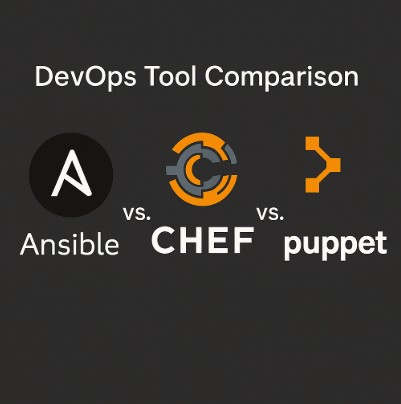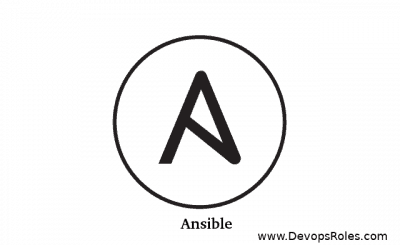In the dynamic world of DevOps, efficient infrastructure management is paramount. Automation is key, and configuration management tools play a crucial role in achieving this. Three prominent players dominate this space: Ansible vs Chef vs Puppet. Each offers a unique approach to automating infrastructure provisioning, configuration, and deployment.
This comprehensive guide provides a detailed DevOps tool comparison: Ansible vs. Chef vs. Puppet, helping you determine which tool best aligns with your specific needs and organizational goals.
Table of Contents
Understanding Configuration Management Tools
Before diving into the specifics of Ansible, Chef, and Puppet, it’s essential to understand the core function of configuration management tools. These tools automate the process of setting up, configuring, and maintaining systems, ensuring consistency and reducing manual errors. They achieve this by defining the desired state of a system and then applying the necessary changes to reach that state. This approach is particularly beneficial in managing large-scale infrastructure, where manual configuration would be incredibly time-consuming and error-prone.
Key Features of Configuration Management Tools:
- Automation: Automates repetitive tasks, freeing up DevOps engineers for more strategic work.
- Consistency: Ensures consistency across multiple systems, reducing configuration drift.
- Scalability: Enables efficient management of large and complex infrastructures.
- Version Control: Allows for tracking changes and reverting to previous configurations.
- Idempotency: Ensures that applying a configuration multiple times has the same effect as applying it once.
Ansible: The Agentless Simplicity
Ansible distinguishes itself through its agentless architecture. It uses SSH to connect to remote systems, eliminating the need for installing agents on each managed node. This simplifies deployment and reduces overhead. Ansible employs YAML, a human-readable language, for defining configurations, making it relatively easy to learn and use.
Ansible Advantages:
- Agentless Architecture: Simplifies deployment and reduces overhead.
- Easy to Learn: Uses YAML, a user-friendly configuration language.
- Fast and Efficient: Known for its speed and efficiency in performing tasks.
- Community Support: Benefits from a large and active community.
Ansible Disadvantages:
- Limited State Management: Not as robust in managing complex, constantly changing states as Chef or Puppet.
- Less Suitable for Complex Environments: Might not be ideal for highly complex infrastructures requiring extensive configuration management.
Ansible Example (Basic):
A simple Ansible playbook to install Apache on a remote server might look like this:
- hosts: webservers
become: true
tasks:
- name: Install Apache
apt:
name: apache2
state: present
Chef: The Robust Infrastructure Management Solution
Chef adopts a more robust, centralized approach to configuration management. It utilizes a client-server architecture where agents (Chef clients) reside on each managed node, regularly checking in with a central server (Chef server) for updated configurations. Chef employs Ruby, a powerful scripting language, for defining configurations, providing greater flexibility and expressiveness.
Chef Advantages:
- Comprehensive Infrastructure Management: Offers a broad range of features for managing complex infrastructures.
- Strong Version Control: Excellent support for version control, facilitating collaborative development and rollback capabilities.
- Scalability: Designed to handle large-scale deployments efficiently.
- Detailed Reporting: Provides detailed reporting and auditing capabilities.
Chef Disadvantages:
- Steeper Learning Curve: Ruby scripting and Chef’s architecture can be more challenging to learn compared to Ansible.
- More Complex Setup: Requires setting up a central server, increasing initial setup complexity.
- Higher Resource Consumption: The agent-based architecture requires more resources compared to Ansible.
Chef Example (Basic):
A basic Chef recipe to install Apache might involve creating a recipe file (e.g., apache2.rb) that uses the `apt` resource:
package "apache2" do
action :install
end
Puppet: The Mature and Powerful Option
Puppet is a mature and powerful configuration management tool that, like Chef, employs a client-server architecture. It utilizes a declarative language (Puppet DSL) to define configurations, making it easier to specify the desired state without explicitly detailing the steps to achieve it. Puppet is well-suited for managing complex, large-scale infrastructures.
Puppet Advantages:
- Mature and Stable: A well-established tool with a long track record and extensive features.
- Powerful Declarative Language: Allows defining configurations concisely and focusing on the desired state.
- Strong Community and Support: Benefits from a large community and readily available support resources.
- Comprehensive Module Library: Offers a vast library of pre-built modules, simplifying common tasks.
Puppet Disadvantages:
- Steep Learning Curve: Its declarative language and architecture can have a steeper learning curve than Ansible.
- More Complex Setup: Like Chef, it requires a central server and client installation.
- Can Be Resource Intensive: Managing large infrastructures can require significant computational resources.
Puppet Example (Basic):
A basic Puppet manifest to install Apache might look like this:
package { 'apache2':
ensure => present,
}
DevOps Tool Comparison: Ansible vs. Chef vs. Puppet – A Summary Table
| Feature | Ansible | Chef | Puppet |
|—————–|—————————|—————————|—————————|
| Architecture | Agentless | Client-Server | Client-Server |
| Configuration Language | YAML | Ruby | Puppet DSL |
| Learning Curve | Easy | Moderate | Moderate |
| Scalability | Moderate | High | High |
| Complexity | Low | High | High |
| Ideal Use Cases | Small to medium-sized deployments, rapid prototyping | Large-scale, complex infrastructures | Large-scale, complex infrastructures, robust state management |
FAQ Section
Q1: Which tool is best for beginners?
Ansible generally has the easiest learning curve due to its agentless architecture and use of YAML.
Q2: Which tool is best for large-scale deployments?
Chef and Puppet are better suited for large-scale deployments because of their robust features and ability to manage complex configurations across many systems.
Q3: Can I use multiple tools together?
Yes, it’s possible and even common to integrate different tools within a DevOps pipeline. For instance, you might use Ansible for quick ad-hoc tasks and Puppet for managing a more complex, long-term infrastructure.
Q4: What about cost?
Ansible has a free open-source version, while Chef and Puppet offer both open-source and commercial versions with varying features and support levels.
Q5: Which tool offers better security features?
All three tools offer security features, but the specific features and their implementation vary. Careful configuration and security best practices are crucial regardless of the chosen tool.

Conclusion
Choosing between Ansible, Chef, and Puppet depends heavily on your specific requirements and organizational context. Ansible’s simplicity and agentless nature make it ideal for smaller teams and quicker deployments. Chef and Puppet offer more robust features and better scalability for large-scale infrastructures but come with a steeper learning curve and more complex setups. Consider your team’s skills, infrastructure complexity, and budget when making your decision. Careful evaluation of your needs against the strengths and weaknesses of each tool is crucial for successful DevOps implementation.
Remember that the best choice is often the one that best fits your existing workflow and future goals. Thoroughly researching each option and perhaps experimenting with trial versions will provide the most informed path towards choosing the optimal configuration management tool for your organization. Thank you for reading the DevopsRoles page!

